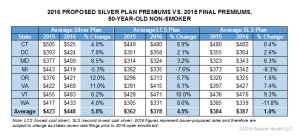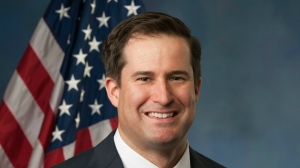Tuesday, June 30, 2015
Monday, June 29, 2015
King v. Burwell: A frivolous lawsuit
Some are surprised that Chief Justice John Roberts came out so strongly for the government in King v. Burwell, the lawsuit that aimed to bar insurance subsidies from Obamacare exchanges run by the federal government.
I’m not a lawyer or Supreme Court scholar but to me Roberts’ stance isn’t surprising at all. King v. Burwell was a joke –an exemplar of the type of “frivolous lawsuit” some on the right are so fond of citing. Roberts wants the Court to be taken seriously both now and in retrospect, so this was an easy decision.
Let’s face it:
- Congress’s intent was clear –to provide subsidies regardless of the mechanism a state chose to implement its exchange
- There was no discussion by anyone at the time of drafting about any difference in subsidization on state v. federal exchanges
- Every state –including those led by Obamacare foes, interpreted the law the way Congress intended
- The legal argument was the result of opponents sifting through the minutiae of the law to find any argument that might be used against it
- The plaintiffs –if they even understand the argument– have not been harmed by the law
Frankly, it’s hard to take the consenting Justices seriously.
Image courtesy of Stuart Miles at FreeDigitalPhotos.net
—
By healthcare business consultant David E. Williams, president of Health Business Group.
from Health Business Blog http://healthbusinessblog.com/2015/06/29/king-v-burwell-a-frivolous-lawsuit/
via A Health Business Blog
Sunday, June 28, 2015
Friday, June 26, 2015
Long term care insights from a long term friend or Yes Virginia, there is a role for LTCi
I wrote my blog post about long term care insurance in reaction to what I thought was a foolish, ivory tower-induced article in the Wall Street Journal, which blamed the unpopularity of long term care insurance on “narrow framing.” Narrow framing is certainly an issue in consumer financial decisions, but with long term care insurance the problem is the products themselves aren’t very attractive.
In particular I’m looking for a plan to cover catastrophic expenses in case I end up in a nursing home for a decade or more. I can pay the first few years myself and want coverage that kicks in later and takes over. Instead the plans that are out there start paying within a few months and end after just a few years of coverage.
Whenever I encounter an insurance oriented issue, I know to turn to InsureBlog’s Henry Stern for his perspective. I always learn something when I do.
Hank has a different spin on long term care insurance than what I’ve heard. Here’s what he writes in his critique of my post:
More disturbing, though, is [David’s] contention that “the benefit structure [of LTCi} doesn’t protect against catastrophic expenses.” This is a common misconception of how LTCI works and what it’s really designed to do, and for that I blame not David, but my industry. The story we’ve been told to tell is that you buy LTCi to pay for care. This is correct, but misleading: there is no realistic way to buy a plan that will completely cover the costs of a major claim (or series of claims). Anyone that could afford to buy such a plan would be much better off self-insuring.
No, the role of LTCi is to supplement one’s assets (and a Partnership-compliant plan is a terrific ally in that quest), and to buy “choice.”
What does that mean, Henry, “choice?”
It means that having the ability to pay for care oneself opens up a lot more doors (as regards facility and resource availability) than folks dependent on Medicaid will see. Is that fair? Doesn’t matter. Is that real? Yes.
Ok, that’s interesting. In other words long term care insurance doesn’t do what I want it to do, but it still does something useful for some people.
So I revise my view: long term care insurance has a role to play. But it still doesn’t deliver what I’m looking for.
—
By healthcare business consultant David E. Williams, president of Health Business Group.
from Health Business Blog http://healthbusinessblog.com/2015/06/26/long-term-care-insights-from-a-long-term-friend-or-yes-virginia-there-is-a-role-for-ltci/
via A Health Business Blog
Thursday, June 25, 2015
Wednesday, June 24, 2015
Primary care prognosis: Is it really so grim?
A lengthy front-page Boston Globe article (Precarious future for primary care) includes some of the usual laments:
- The shortage of primary care physicians is bad and getting worse
- Primary care docs don’t make enough money compared to specialists
- Student loan burdens discourage a career in primary care
- Medical schools implicitly discourage the best students from going into primary care
There is some truth in the above, but the article misses other significant problems with primary care and fails to note factors that I think may lead to a resurgence of primary care over the next decade.
First, some more challenges specific to primary care:
- Increasing oversight and control through quality reporting requirements that fall most heavily on primary care
- The rise of non-physician primary care providers, i.e., nurse practitioners and physician assistants, which in some cases erodes the prestige of being a doctor
The article mentions how new doctors continue to go into more lucrative specialties instead. But if I were starting a medical career, I would look seriously at primary care.
In the traditional fee-for-service model, health systems viewed primary care physicians primarily as feeders for profitable specialties and diagnostic tests. A primary care physician who referred lots of patients to the hospital for MRIs, stress tests and hip replacements was a great thing.
In new value based models, primary care physicians are often taking control. They are starting to view specialists more as vendors, and are thinking twice before making referrals. In this new world, specialists have to demonstrate efficiency, responsiveness and effectiveness to earn referrals. Primary care physicians are climbing into the driver’s seat and finding opportunities to boost their incomes through performance based bonuses. It’s specialists who should be worried about what will happen to their flow of patients and their incomes.
Also, primary care physicians who don’t like the traditional practice set-up can become concierge physicians, boosting their incomes and autonomy in the process. There’s plenty of demand for such services in places like Boston. When I looked into getting a concierge physician for myself the offices either didn’t return my calls or replied that they were not taking new patients.
Read the article carefully and you’ll see that there are also opportunities for primary care to improve through more enlightened practice administration. Scheduling is a prime example. In one place we are told that there is such a shortage of primary care that “they’re filled to the brim with appointments.” But we also read:
Dr. Danielle Silwa… was at her computer… staring at a roster of her patients, most of them no-shows… ‘Sometimes you have days where half your [schedule] doesn’t show up.’
So why are the appointment slots all taken but only half the patients show up? Well, when someone calls for an appointment and is told to wait a month or two, by the time the appointment rolls around they are either dead, or the problem has been resolved, or they’ve forgotten about the visit. There are solutions to this common problem. Open access scheduling, where slots are intentionally left open for same or next-day appointments, has the unintuitive impact of increasing capacity utilization while increasing patient satisfaction. And digital appointments such as video visits and asynchronous encounters can be used to take up the slack when no-shows do occur.
Meanwhile, primary care practices can optimize their use of NPs and PAs, leaving the doctors to work with the more complex patients, and not be stuck just with the more mundane and lower skilled functions mentioned in the article: “act as gatekeepers, watch for signs of decline, push for healthy habits.”
There’s a real need for primary care physicians. In the long run I expect primary to become a more attractive career path, while some specialties will become less enticing. It will take a while for the changes to work their way through the system, and there may be some hiccups and setbacks along the way. But I really don’t agree with the Globe’s angle on this topic.
Image courtesy of Stuart Miles at FreeDigitalPhotos.net
—
By healthcare business consultant David E. Williams, president of Health Business Group.
from Health Business Blog http://healthbusinessblog.com/2015/06/24/primary-care-prognosis-is-it-really-so-grim/
via A Health Business Blog
Tuesday, June 23, 2015
Saturday, June 20, 2015
Friday, June 19, 2015
Long term care insurance –perspectives from InsureBlog
Hank Stern from InsureBlog has been known to keep me honest on insurance topics, so after I went off about long term care insurance earlier this week, I asked him to let me know if I was out of line.
Good friend that he is he responded by writing not just one but two posts on the topic. The first post –about the WSJ article that annoyed me in the first place- is posted today. The next –responding to issues I raised in my post– is forthcoming.
While acknowledging that some of the basic info in the article is accurate, Hank also has a bone to pick with the authors. Here’s something new I learned from the post:
Interestingly, the article fails to mention one of the most valuable, easily understood benefits of LTCi, one which addresses pretty much all of their concerns: the Partnership Program. Pointing out that a properly constructed plan will help keep the Medicaid folks at bay makes for a very compelling argument that even “narrow framers” would find hard to resist.
This program is meant to get people to buy long term care insurance to reduce the burden on Medicaid. The idea is to “take the value of the plan ‘off the table’ when determining Medicaid eligibility for long term care.”
—
By healthcare business consultant David E. Williams, president of Health Business Group.
from Health Business Blog http://healthbusinessblog.com/2015/06/19/long-term-care-insurance-perspectives-from-insureblog/
via A Health Business Blog
Thursday, June 18, 2015
Health Wonk Review is up at Boston Health News
Tinker Ready at Boston Health News treats us to an action-packed edition of the Health Wonk Review. Check out all the latest wonky posts.
from Health Business Blog http://healthbusinessblog.com/2015/06/18/health-wonk-review-is-up-at-boston-health-news-5/
via A Health Business Blog
Wednesday, June 17, 2015
Long term care insurance –narrow framing is not the problem
Health Business Blog readers know the Wall St. Journal is among my favorite publications, but I have to call BS on a recent piece: Why People Don’t Buy Long-Term-Care Insurance. It’s written by a couple of Wharton professors, who frankly should be ashamed of themselves.
Here’s what they have to say:
When it comes to long-term care, two facts stand out. First, an estimated 70% of people will need such care, which will be costly. And second, most of them refuse to buy insurance to cover it…
[O]ur research suggests that some consumers’ rejection of long-term-care insurance is based on what psychologists call “narrow framing,” or people’s tendency to exclude key factors when making decisions. Narrow framing has been found to be common when individuals face complicated decisions—and shopping for long-term-care insurance is certainly one of those instances.
Then they go on to explain how they classified people as “narrow framers” and finally end with advice for insurance companies on how to tweak and reposition their products.
Give me a break.
There may be some narrow framing going on, but that’s not the main issue. The problem is that for many people long term care insurance isn’t an attractive product.
Insurance is useful when it covers rare events that could be financially ruinous. But long-term care is a common need (“70% of people” according to the authors) and the benefit structure doesn’t protect against catastrophic expenses.
Last time I looked into long term care insurance, two years ago, I was offered a level premium policy for my wife and me that cost over $10,000 per year. The benefits were $10,000 per month, with a 25 week elimination period (that’s the waiting time before benefits kick in) and 6 year benefit period, with a 5% COLA. In other words (leaving aside inflation for a moment), the maximum benefit is $720,000.
What I really wanted was a policy with a 5 year elimination period and no cap on the benefit period. But no one I can find offers that –either because it’s not legal or because there’s insufficient demand.
Call me a “narrow framer” if you will, but before that, please provide a better argument for why long term care insurance is a good value.
Image courtesy of marcolm at FreeDigitalPhotos.net
—
By healthcare business consultant David E. Williams, president of Health Business Group.
from Health Business Blog http://healthbusinessblog.com/2015/06/17/long-term-care-insurance-narrow-framing-is-not-the-problem/
via A Health Business Blog
Tuesday, June 16, 2015
Saturday, June 13, 2015
Friday, June 12, 2015
Actually Obamacare prices aren’t skyrocketing
A CNN article (Obamacare sticker shock: Big rate hikes proposed for 2016) earlier this month certainly made things sound dire:
Hold onto your wallets… many insurers want to substantially hike rates on Obamacare policies for 2016.
Many are proposing double-digit premium increases for individual policies, with some companies looking to boost rates more than 60%…
In Florida, for instance, United Healthcare wants to raise the rates of plans sold on the Obamacare exchange by an average of 18%. Individual policies available outside the exchange through United Healthcare or through a broker would go up by 31%, on average, with hikes as high as 60% for certain plans in certain locations.
In Texas, insurer Scott & White is looking for a 32% increase for exchange-based plans, while Humana is asking for an average 30% boost for its exclusive provider organization policies, which generally cover only in-network services.
That sure sounds pretty bad. And maybe it’s true, since Florida and Texas are such screwed up healthcare markets. Our small business has experienced Obamacare-driven rate hikes as well, so it’s not like I’m unsympathetic.
But I put a lot more faith in a new analysis from Avalere Health, which did a thorough analysis in the eight states where complete 2016 premium information is available. What they found is that Silver plans (bought by 68 percent of exchange enrollees) had proposed average premium increases of 5.8 percent, and that the premium for the lowest cost silver plan was rising only 4.5 percent. Keep in mind these are the proposed rates –actual increases may be lower.
Click the image below for a better view of the Avalere analysis.
The cheapest plan one year might not be the cheapest plan the next year, so enrollees might need to shift plans to keep their premiums low. And this fact points to the most significant omission from the CNN. United may be raising its rates by 18%, but as long as a competitor is offering lower premiums, consumers still have options. In addition, consumers who receive subsidies –and that’s most people– won’t necessarily feel any change.
—
By healthcare business consultant David E. Williams, president of Health Business Group.
from Health Business Blog http://healthbusinessblog.com/2015/06/12/actually-obamacare-prices-arent-skyrocketing/
via A Health Business Blog
Thursday, June 11, 2015
Wednesday, June 10, 2015
Seth Moulton and the VA again
Last week I praised Congressman Seth Moulton for working to reform the VA based on his experience as a patient. I thought he did a reasonable job at looking for opportunities for improvement rather than bashing the organization and its employees. I also pointed out that while there are problems with the VA there’s no guarantee things are better in the private sector.
At least based on the letters the Globe published in response to the original article, others didn’t see things the same way.
- Dr. Henry Feldman who works mainly at the BI but also at the VA makes my point by stating that things would be as bad or worse at a “prestigious medical center” if a patient walked in with no medical records or insurance cards
- William O’Brien, a retired VA mental health chief, blames Congress for increasing the VA’s workload through two wars without providing additional funds to take care of everyone.
As I reread the article I can understand where the letter writers are coming from, but I still give Moulton the benefit of the doubt. If anything responsibility for the tone of the overall article should be placed on the reporter and editor. While Feldman and O’Brien make good points, there are plenty of opportunities for the VA to improve and I’m glad Moulton is trying to help make it happen.
—
By healthcare business consultant David E. Williams, president of Health Business Group.
from Health Business Blog http://healthbusinessblog.com/2015/06/10/seth-moulton-and-the-va-again/
via A Health Business Blog
Tuesday, June 9, 2015
Monday, June 8, 2015
Sunday, June 7, 2015
Health Wonk Review is up
The latest Health Wonk Review blog carnival is up at Colorado Health Insurance Insider. It’t the Summertime edition featuring posts on King v. Burwell, conflicts of interest, costs and utilization, and the future.
Enjoy!
from Health Business Blog http://healthbusinessblog.com/2015/06/07/health-wonk-review-is-up-6/
via A Health Business Blog
Saturday, June 6, 2015
Friday, June 5, 2015
Seth Moulton and the VA system: I like what I see
Congressman Seth Moulton was an inspiring candidate: a Marine and Harvard Business School grad with strong leadership skills who wanted to serve the country in Washington. Despite the cynicism I and many others have for politicians, this guy seemed like the real deal.
So far he appears to be living up to his promise.
I was very impressed by an article in today’s Boston Globe (In effort to fix woes in VA care, Moulton taps own experience) about how Seth is working to reform the VA healthcare system. He went for care at the VA without revealing his Congressional status, and he solicited input from others in the waiting room and from his own military buddies. He noted that many of the staff and clinicians are doing a good job, and tried to identify what was holding them back. He’s attempting to translate his insights into pragmatic reforms that can help address root causes of the problems.
All of this is a welcome break from the usual bloviating we hear on Capitol Hill when it comes to the VA and other topics. I hope Seth is successful with this approach and that it is contagious among his colleagues!
I do want to point out that the VA often gets a bad rap. Yes, there are all sorts of problems, many of which are inexcusable. When we read articles about the VA the implicit assumption is that things are much better in the private sector. But those of us who work in the system know the VA has no monopoly on inexcusable lapses in quality, safety and customer service.
—
By healthcare business consultant David E. Williams, president of Health Business Group.
from Health Business Blog http://healthbusinessblog.com/2015/06/05/seth-moulton-and-the-va-system-i-like-what-i-see/
via A Health Business Blog
Thursday, June 4, 2015
Wednesday, June 3, 2015
Temporary health plans with low benefits continue to grow
From Kaiser Health News (Consumers Drawn to Low Prices of Temporary Health Plans Despite Risks)
Long seen as a stopgap for people between jobs, short-term policies that focus on catastrophic coverage [are growing in popularity]. In exchange for their lower premiums, the plans come with sharp limits, including no coverage for pre-existing medical conditions. Many consumer advocates hoped interest in such plans would decline after the Affordable Care Act made broader coverage widely available, but short-term policies appear to be enjoying a resurgence, brokers say.
The article doesn’t directly address why the plans are continuing to sell. Here’s what I think:
- The Affordable Care Act has increased awareness that everyone needs to have health insurance, so more people who would have otherwise had a gap in coverage are purchasing these plans instead
- Some shoppers may think that the plans –some of which can be bought on line– are actually part of the Obamacare exchanges; they don’t realize that the plans don’t meet the essential benefits requirements
- In states that have not expanded Medicaid, lower income buyers may be opting for temporary plans instead. The article didn’t provide data to analyze this possibility, but I’m interested
- The plans are marketing themselves effectively, emphasizing affordability
Image courtesy of Idea go at FreeDigitalPhotos.net
—
By healthcare business consultant David E. Williams, president of Health Business Group.
from Health Business Blog http://healthbusinessblog.com/2015/06/03/temporary-health-plans-with-low-benefits-continue-to-grow/
via A Health Business Blog
Tuesday, June 2, 2015
Monday, June 1, 2015
Wholesale iPhones and Samsung Cell Phones available today.
http://ifttt.com/images/no_image_card.png via http://app.getresponse.com/rss/discount_store_returns published June 01, 2015 at 08:06PM
from Discount Store Returns Blogger blog http://discountstorereturns.blogspot.com/2015/06/wholesale-iphones-and-samsung-cell.html
via Discount Store Returns Blogger Blog
Sorry Captain, there’s no transparency in medical pricing
In the 1990s I used to go to a decent family seafood restaurant in the Coolidge Corner area of Brookline: Captain’s Wharf. The restaurant was pretty successful and underwent a nice renovation. Soon after it closed, which was a surprise, but the building was soon put to a better and higher use: Coolidge Corner Imaging — an outpatient MRI/CT center.
I thought of Captain’s Wharf recently when I read a Kaiser Health News story about a consumer who did his darndest to find a good deal on a CT scan, finally settling on the $475.53 price at Coolidge Corner Imaging.
But the bill he got later was for $1,273.02 — more than twice as much — from a hospital he had no idea was connected to the imaging center.
“I was shocked,” said White, a doctor of physical therapy who thought he knew his way around the medical system. “If I get tripped up, the average consumer doesn’t have the slightest chance of effectively managing their health expenses.”
The patient wasted tons of time and effort trying to get the problem cleared up. He cared since he had a high deductible plan.
In my view, high deductible plans are a pretty crude instrument to encourage cost consciousness and price transparency. I switched to a high-deductible plan recently because the premium was so much lower –as a business owner I pay the whole premium in any case. It has no real impact on the way our family uses the insurance. The main impact is that I struggle more to understand the medical bills and EOBs that arrive. In particular, once one dependent met his deductible I kept getting confused by new bills that arrived asking for the out-of-pocket payment.
Were these expenses not subject to the deductible? Was the date of service before the deductible was met? It was hard to know and I’m still unclear. What is clear is that my administrative cost is higher from trying to deal with the nonsense.
Meanwhile, on the lower end of the income spectrum are people with high deductible plans who are afraid to use their benefits for fear of the deductible. That’s an indirect subsidy to folks like me, because when people hold back on running up a bill it holds down overall expenses.
High deductible plans are pretty lame. Transparency isn’t here yet and even then it will only be part of the answer. Can’t we do better?
Image courtesy of stockimages at FreeDigitalPhotos.net
—
By healthcare business consultant David E. Williams, president of Health Business Group.
from Health Business Blog http://healthbusinessblog.com/2015/06/01/sorry-captain-theres-no-transparency-in-medical-pricing/
via A Health Business Blog







